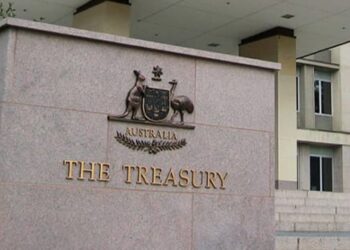In a letter to stakeholders that had previously provided feedback concerning financial advice ongoing fee consent forms, Treasury has sought consultation on the design of consent forms for ongoing advice fees.
Under the Treasury Laws Amendment (Delivering Better Financial Outcomes and Other Measures) Act 2024, which was passed in July and represented the first tranche of advice reforms on the back of the Quality of Advice Review (QAR), there are a number of changes to consent forms.
Schedule 1, Part 2 of the act removes the requirement to provide a fee disclosure statement, introduces flexibility in anniversary date timing for OFAs, amends the mandatory content for ongoing fee consents and replaces ASIC’s ability to prescribe this content with ministerial ability.
Broadly, as Treasury explained in its letter, this means that the minister has the power to approve a form for “giving consent to enter into or renew an ongoing fee arrangement or authorise the deduction of ongoing fees”.
“The design of this form is currently being considered by Government,” Treasury said.
“To support these considerations, Treasury is seeking feedback from interested stakeholders on potential design parameters for an approved consent form.”
The consultation aims to find examples of best practice forms for entering into a fee arrangement and deducting fees from a financial product, as well as how the current processes “present administrative burdens” that an approved form could fix.
“We also welcome any additional information that you consider will be useful in informing the design of an approved form. The information can be in relation to both ongoing or non-ongoing arrangements and deductions,” Treasury said.
However, the department stressed that, in order for the government to approve a form, there needs to be a “broad consensus from stakeholders” and it must be “clear that efficiency benefits will be achieved”.
“It is not our intention to finalise the design of a form prior to the new arrangements commencing on 10 January 2025 as we are aware that this may require system changes for some stakeholders. Transitional arrangements and appropriate timing for implementation will form part of the design considerations,” Treasury added.
“Once we have reviewed the initial information, Treasury will provide further details regarding next steps in the design process. This is likely to occur in early 2025.”
Speaking on a Financial Advice Association Australia (FAAA) webinar this week, chief executive Sarah Abood said the FAAA would push for digital consent to be “part of this process”, adding that the association is trying to “support and promote digital solutions wherever we can”.
Consensus was for removal of consent forms
While the government and Treasury are seeking a “broad consensus” for the minister to approve a form, the consensus ahead of the legislation passing was for consent forms to be removed entirely.
The FAAA, the Association of Independently Owned Financial Professionals (AIOFP), and the Stockbrokers and Investment Advisers Association (SIAA), all called for the removal of the requirement to provide a product issuer with a fee consent form.
“A standardised fee consent form will only deliver productivity benefits if product issuers are required to accept it,” Abood said in the FAAA’s submission to the draft legislation consultation.
“As they have already invested in systems and processes to meet this requirement, it is unlikely that product providers will change their approach without a legislative requirement for them to do so.”
While the FAAA acknowledged that requiring product issuers to accept a standard form as evidence of client consent could work, Abood said the preferred method would be to remove the requirement for product issuers to verify client consent for every account.
“We now believe that the only sensible way to move forward is to remove the requirement for the fee consent form to be provided to product providers and allowing them instead to operate a sample-based audit regime,” she said.
The SIAA’s submission echoed these sentiments, arguing that the requirement for product issuers to be sent and accept the client fee consent form for the fee to be paid adds unnecessary complexity to the process.
“Our members support the principle that underpins the requirements – that clients are aware of and consent to the fees that are charged for the services they receive,” the SIAA submission said.
“However, the current regulatory framework has introduced additional cost and complexity for clients; facilitates anti-competitive outcomes; and thus the principle has become obscured.”
AIOFP technical panel chair Lionel Rodrigues argued that while consent forms should be “abolished”, the single consent form is a compromise that can work.
“In the absence of abolishing this consent, my professional opinion is the three current forms should be incorporated into one standard document, verifying ‘consent’,” he said.
“That this consent form be a once only document signed by the client and kept as a written record for audit purposes.
“The consent form should be given to or transmitted to the client for their records and for transparency purposes.
“This once only consent form should be a document between the professional financial adviser and the client. It should not substitute as a de facto fee payment authority to any product provider or superannuation fund as is the situation currently.”




Sounds like the standardized AML/ CTF forms process from 2001 ….most industry super funds will tell you they won’t be relying on the adviser to declare they’ve identified the client despite a) legislation allowing it and b) the $x billion lost via identity theft last year. So they’ll delay the application until they carry out their additional identification verification requirements. Why are they thinking things will be so different. Are they out of touch?
Imagine needs months and months, along with consultation, to make a basic form. Not hard to see the public sector is handling this – absolute waste of taxpayer money as usual.
Any private sector advice firm could have had a completely appropriate and usable form ready to go in a couple of hours – the idea that a simple form takes months to create just shows how out of touch these moronic departments are – nothing like keeping themselves in a job by turning an hours work into a multi-month project.
It is almost 2025 and the only thing the muppets need to do is the following :
1. Create a simple form that can be signed by a customer either in paper or electronic form which ONLY needs to be held by the advice provider and REQUIRES the product manufacturer to act upon it following electronic consent from the advice provider to them of its existence WITHOUT any need for the product manufacturer to hold or sight it.
Such a simple change would save millions of dollars in waste yet I won’t hold my breath the rule makers can achieve such a brief given their total incompetence in the past.
Maybe Treasury should consult with Nerida Cole about the validity of Adviser fees and the appropriateness of the advice provided to the client or fund member ?
So the new fee consent requirements commence in January but we won’t know the content requirement of those consent forms until some date after that?? how does that make any sense.